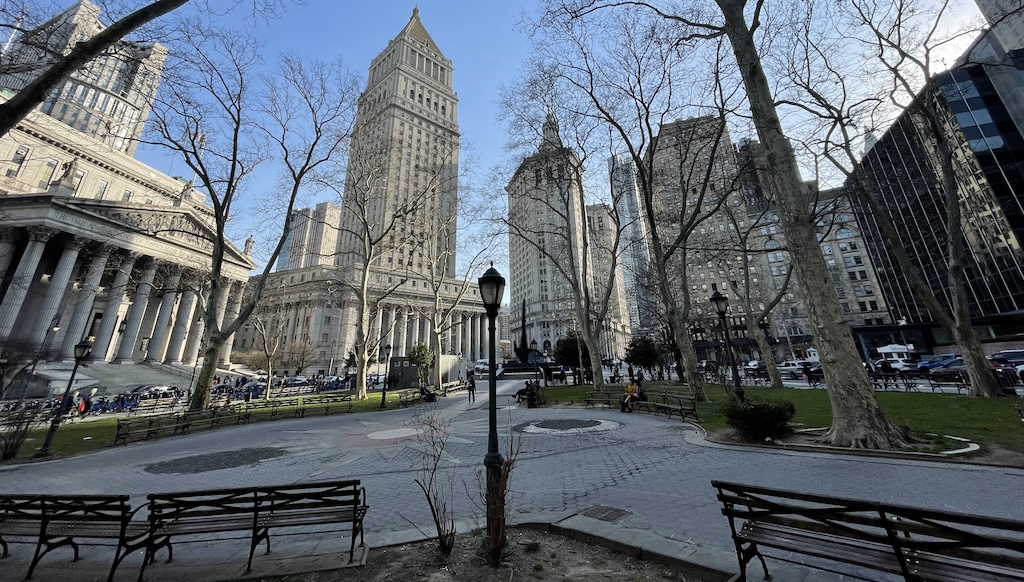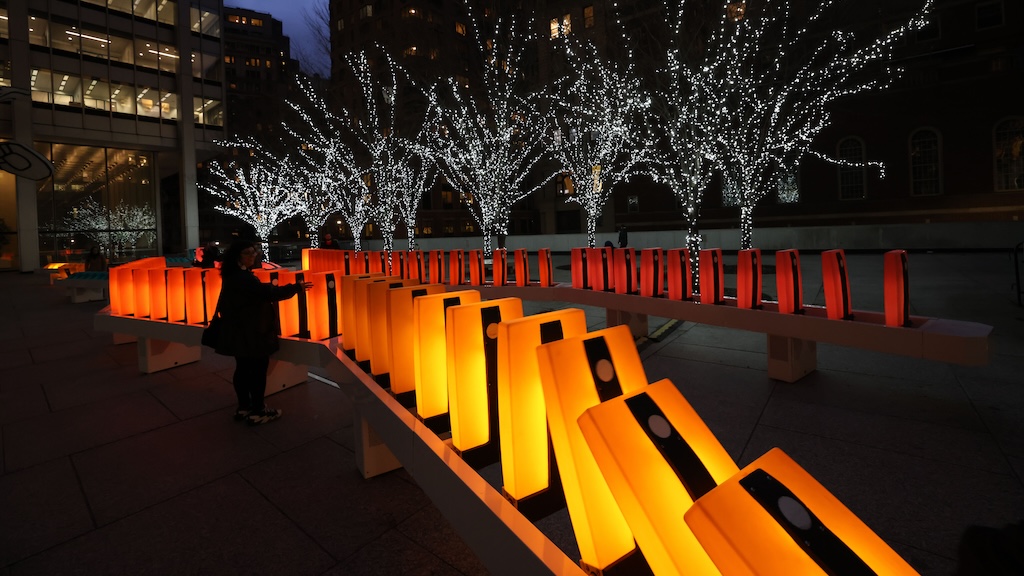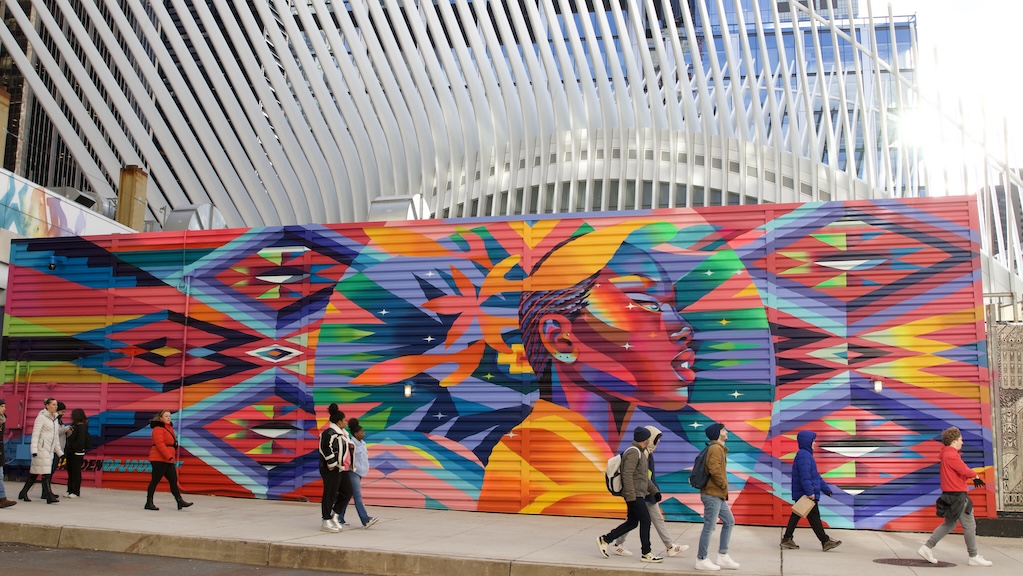Find the Secret Slice of Ireland Hidden in Lower Manhattan
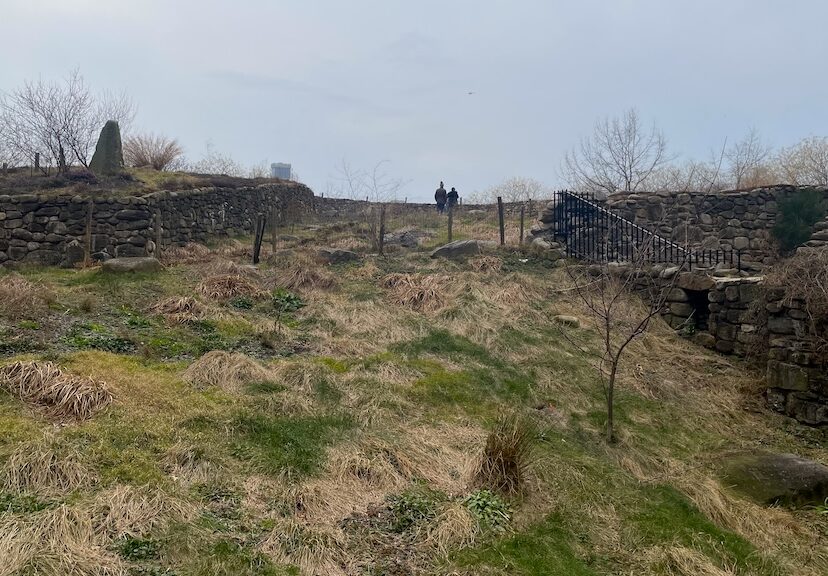
It takes only a twisty trail, a rising hill covered in shabby grass and a reconstructed Irish stone cottage for the Irish Hunger Memorial to nail its illusion. The city and its skyscrapers give way to sloping fields and scraggly plants, and you feel like you’ve stepped through a wormhole to the Irish countryside, even though you’re in Rockefeller Park.
The memorial to worldwide hunger, and the famine that killed one million in Ireland, takes up only half an acre, a slice of land that feels airlifted in from the old country. That look is achieved through use of native Irish flora and stones from each of Ireland’s 32 counties. Plus, the cantilevered edge to the park, with sweeping views of the Statue of Liberty and Ellis Island, makes the whole thing feel like it’s floating above Rockefeller Park. It’s a replica of the countryside and a reminder of the connection between Ireland and New York City.
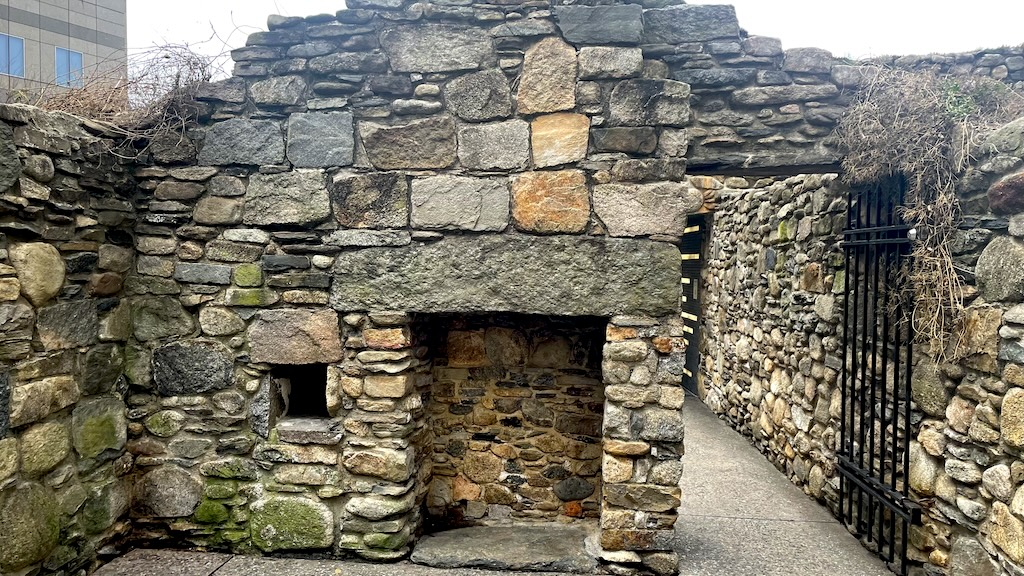
The entryway to the memorial is a tunnel lined with quotes and headlines about hunger and the potato famine in Ireland that started in 1845. It has a warp tunnel effect, bringing you to the other side and the reconstructed remains of an 1820s stone cottage from County Mayo built into the hillside. It’s meant as a tribute from the Irish that stayed behind during the famine, sent to those who left to start new lives in New York.
The memorial opened in 2002 and was mid-construction during the 9/11 attacks; its bulldozers were borrowed for the relief effort. It still managed to open the next year to praise in the New York Times. Critic Roberta Smith called it “an unconventional work of public art that strikes a deep emotional chord, sums up its artistic moment for a broad audience and expands the understanding of what a public memorial can be.”

The timing of the opening was a comfort, Smith wrote, embraced as a symbol of the hundreds of first responders of Irish descent who died in the attacks. She wrote:
“Perhaps most important, the memorial has arrived at a time when Americans, especially young Americans, have a deeper understanding of tragedy and grief, of fate’s capriciousness and of the complexities of power.”
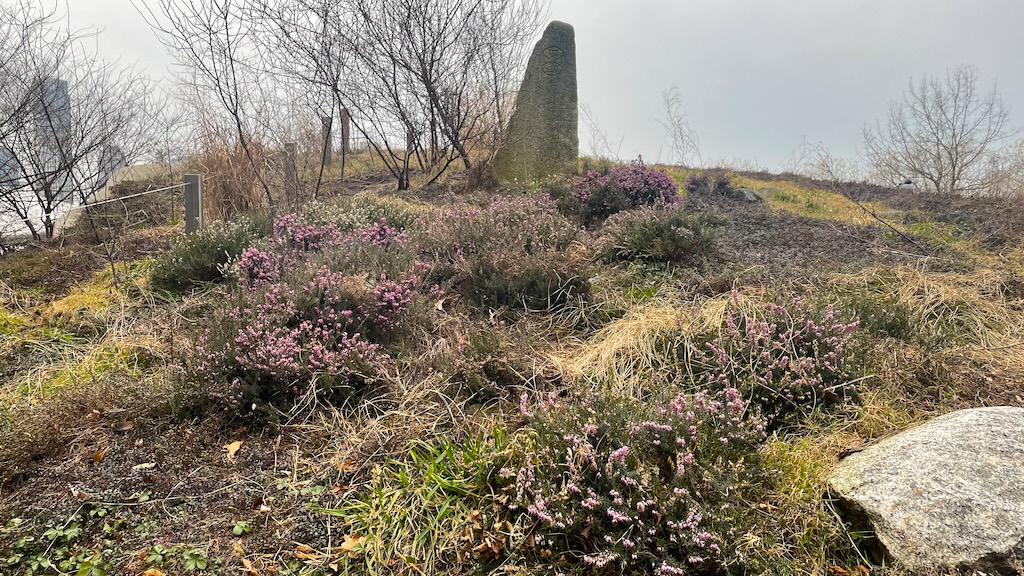
Today, the memorial still stands as an elevated slice of peaceful countryside in the middle of a bustling neighborhood. With its bluff facing the river and Ellis Island, the park is a tribute to not just Irish immigrants, but all the waves of immigration that shaped this city — and the tragic circumstances that many left when looking for a better life in New York.
Tags: Irish Hunger Memorial, St. Patrick's Day